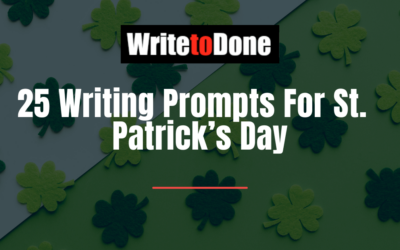“And what is the use of a book,” thought Alice, “without pictures or conversations?” – Lewis Carroll
I can manage books without pictures, but I know how Alice feels about the conversations. When I’m browsing, I flick through books to see how much dialog there is. If there doesn’t seem to be much, I’ll put the book down and choose something else.
I’m pretty sure I’m not the only person who does this, either…
As a writer, dialog lets you:
- Show rather than tell – when characters act and speak, they become real to us
- Build tension and drama, furthering the plot
- Reveal character in what’s said (or what isn’t said)
- Create white space on the page – attractive to busy readers
But many writers list “dialog” as one of the key things they struggle with. I love writing dialog, and I still have to work hard at it.
So what makes for good dialog?
#1: Watch Your Dialog Tags
A “dialog tag” is the bit you put before or after the dialog, like:
- he said
- she asked
- I replied
In primary (elementary) school, I was taught to vary dialog tags with words like whispered, shouted, pondered … This might be great for encouraging kids to grow their vocabulary, but it’s poor advice for any adult fiction writer.
Normally, the word “said” will do just fine. Throw in an occasional “whispered” or “shouted” if you need to, but don’t get fancier than that. The reader will barely notice the word “said” – but when characters start “mumbling awkwardly” or “opining” then the dialog tags end up distracting from the actual dialog.
(I particularly dislike the use of words like “laughed” and “giggled” as dialog tags. Does anyone really giggle a whole sentence?)
You can normally avoid adjectives and modifying phrases, too. If the dialog is well-written, readers will know that it was “said happily” or “shouted furiously”.
#2: Ground Your Dialog in a Scene
It’s easy to fall into the trap of “talking heads” – two characters discussing something in bare lines of dialog, with little or no supporting text.
Every conversation that takes place needs to be somewhere. The location or scene makes a difference to the actual dialog. Think about:
- Where are your characters? In a busy coffee shop, driving in a car, on a train, at home…?
- Who’s nearby? Nosy onlookers, young children, the boss…
You don’t have to have action or description after every single line of dialog, but you do need a sense that your characters are physically located in a particular setting.
It can be tough to manage dialog on the phone, where characters can’t see one another; you can use tone of voice or background noise to help add to the scene.
#3: Use Dialect and Accents with Caution
One mistake that newer writers often make is to go over the top with dialect words or accents. This can make the text incredibly hard to read – and it can also be unintentionally comic, or even offensive.
Generally, less is more. If you have a Scottish character, they don’t need to sound like a Burns poem. Use the occasional dialect word like “wee” and the reader will get the idea.
Similarly, if you have an uneducated or lower-class character, using non-standard grammar or phrases (e.g. “ain’t”) will establish their voice – you don’t need to start knocking letters off every word.
#4: Don’t Let One Person Speak for Too Long
In real life, we don’t normally give long speeches during regular conversations. There are some circumstances where one person might speak for several minutes at a time – during a lecture, sermon, etc – but this is limited to special occasions.
If your characters have long blocks of speech, break those up. Other characters could butt in or simply ask for clarification. You could also have non-verbal responses from the listeners (nodding, sighing, frowning, etc).
When your plot requires a character to speak for some length of time, don’t give us the whole speech! A few lines from the start and end, plus a narrative summary of what was said, will be enough.
#5: Realistic Doesn’t Mean Real
This was one of the areas I struggled with. I tried too hard to make my dialog realistic – with lots of “ums”, hesitations, repetitions and so on. It was over-the-top. Dialog is supposed to give an impression of real speech; it’s not supposed to be a transcript of how we really talk.
When I went back and cleaned up the dialog, my text flowed much more smoothly. That meant having my characters speak in realistic-sounding but clear sentences. They did hesitate or stumble at times – but only when it was really warranted by what was going on.
#6: Give Your Characters Distinct Speech Patterns
Do all your characters sound exactly the same? If so, you need to do some tweaking.
Think about:
- Age: a 13-year-old will speak differently from a 70-year-old
- Gender: women and men may use different vocabulary
- Social background: does your character use down-to-earth words or “posh” ones?
- Education level: does your character have a wide or limited vocabulary?
- Geographical area: where do they live?
- Particular catch phrases: don’t go overboard here, but consider whether your character has any common phrases (things like “for sure!” or “good good” or “awesome”)
- Verbosity: some people tend to babble, others will be taciturn
One good trick is to take just the lines of dialog in your short story or novel – cut out the action and dialog tags – and see whether you can work out who said what.
#7: Don’t Put Exposition in the Dialog
Sometimes, you need to convey information about the characters. Don’t try to force this into the dialog– it’ll come across as stagey and fake. Avoid having characters tell one another things that they logically should already know. This sort of dialog is a particular problem for sci-fi writers: “But captain, if the unobtanium runs out, the whole ship is gonna blow…”
If you’re really keen to get information across during a conversation, then make sure that the set-up for the conversation is appropriate. If two friends are catching up after 10 years apart, they might well fill in one another on the details of their work, family and lives in general.
.
#8: Use Silence as Well as Words
Sometimes, what’s not said is more powerful than what is said.
If one character says “I love you” and the other person doesn’t say anything at all, that’s often stronger than a response like “Oh, okay” or “Yeah, right”.
When a character refuses to respond to a particular question, or refuses to speak to a certain person, we immediately know that there’s something going on – without the author having to say “James didn’t want to talk about his marriage” or “Mary hadn’t been on speaking terms with her mother-in-law for years.”
#9: Get in Late, Leave Early
You don’t have to begin the conversation at the first word and end at the last.
If someone’s talking on the phone, cut out all the “Hi, how are you?” “Fine thanks, and you?” bits at the start. Yes, they’re realistic – but the reader isn’t interested.
Often, it’s powerful to end a scene on a line of a dialog. We don’t need to see how the other character responds. We definitely don’t need the conversation to tail off into “Bye” and “See you next time.”
#10: Punctuate Your Dialog Correctly
This is crucial if you’re going to be submitting your work to publishers, or if you’re entering writing competitions. It’s also vital if you’re self-publishing – you want your story or novel to be as professional as possible.
Dialog should:
- Begin on a new line for each new speaker
- Have double or single quotation marks around the words (be consistent with which you choose – as a rule of thumb, the US standard is double and UK is single)
- Have punctuation inside the quotation marks
- End the dialog line with a comma if you’re adding a dialog tag, but with a full stop if you’re adding an action.
Here’s an example:
“Joe, please come here,” Sarah said. “We need to talk.”
“What about?”
“You know what.” She folded her arms.
If you’re struggling with dialog, try writing a new scene that involves an important conversation. And if you’ve already written lots of dialog that’s not quite working, go back through with these ten tips in mind – see how you can strengthen it.
















